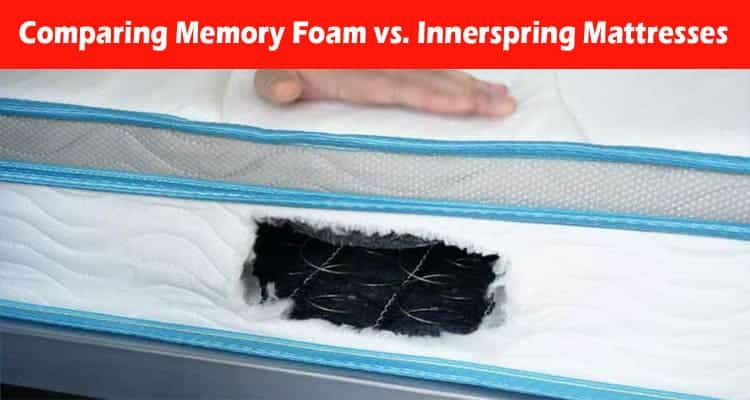Comparing Memory Foam vs. Innerspring Mattresses: Which Is Right for You?

How to Comparing Memory Foam vs. Innerspring Mattresses
When you’re deciding between a memory foam and an innerspring mattress, there are several key factors to bear in mind. Memory foam is known for its unique ability to conform to your body, providing excellent comfort and support, especially crucial for those with joint pain or those who sleep on their side.
When looking at durability, memory foam typically outlasts innerspring, but some prefer the innerspring’s different feel. You might want to contemplate allergies too, as memory foam is hypoallergenic and resistant to dust mites and mold.
These are just the basics – the right one for you depends on your specific needs and preferences. Keep exploring, there’s a lot more to discover!
Understanding Memory Foam Mattresses
The foam contours to your shape, relieving pressure points and offering a personalized sleep experience. You’ll sink into the mattress, feeling it hug your body, supporting you in all the right places. It’s also great at absorbing motion, so if your partner tosses and turns, you won’t be disturbed.
However, memory foam tends to trap heat, which might make you feel warmer. And you might find it hard to move or change positions because the foam molds to your body. Plus, some people don’t like the chemical smell that’s often present when the mattress is new.
But if you value comfort and support, it could be just what you’re looking for.
In-Depth: Innerspring Mattresses
Instead of layers of foam, innerspring models use a network of steel coils for support. These coils determine the firmness and overall feel of the mattress. More coils often mean better support and mattress longevity.
Innerspring mattresses usually have a top layer, often referred to as a ‘comfort layer,’ made of various fibers or foam to provide cushioning. This layer can be a game-changer regarding the mattress’s comfort, depending on its thickness and the materials used.
Comfort Comparison: Foam Vs. Innerspring
When it comes to comfort, there’s a noticeable difference between memory foam and innerspring mattresses that you should consider.
Memory foam mattresses mold to your body’s shape, providing personalized support and pressure relief. They’re great if you’ve got joint pain or sleep on your side, as they can help align your spine and reduce pressure points.
On the other hand, innerspring mattresses offer a traditional, bouncy feel. They’re usually firmer, providing more generalized support. If you sleep on your stomach or back, or prefer a firm surface, you might find innerspring mattresses more comfortable. However, they may not provide the same level of pressure relief or contouring as memory foam.
Lifespan and Durability Differences
Examining the lifespan and durability of both memory foam and innerspring mattresses, it’s clear that these factors may heavily influence your ultimate decision.
On average, a high-quality memory foam mattress can last up to 10-15 years while innerspring mattresses typically have a lifespan of 7-10 years. Memory foam’s durability is due to its ability to regain shape after pressure is removed, which reduces wear and tear.
Conversely, innerspring mattresses may sag over time due to the continuous pressure on the springs. Regarding durability, memory foam also takes the lead as it’s resistant to dust mites and mold.
Allergy Considerations: Foam and Innerspring
If you’re a plus sized sleeper with allergies, choosing between a memory foam and an innerspring mattress is crucial for your comfort and health.
Memory foam options are typically hypoallergenic, offering a dense structure less conducive to dust mites, mold, and other allergens, making them a preferable choice for those sensitive to such irritants.
They’re less likely to harbor dust mites, mold, and other allergens because of their dense structure. So, if you’re sensitive to such irritants, memory foam might be your best bet.
On the other hand, innerspring mattresses can be a breeding ground for allergens. Their coil construction provides ample space for dust mites and mold to thrive.
However, with regular cleaning and use of a quality mattress protector, you can mitigate these issues. So, while foam appears to have the upper hand regarding allergy considerations, don’t completely rule out innerspring options.
Conclusion
Ultimately, the choice between memory foam and innerspring mattresses comes down to your personal needs and preferences.
If you’re after a cloud-like comfort and less allergy worries, foam might be your best bet. But if you value a bouncy feel and longer lifespan, innerspring could be the way to go.
Take your time, consider your options, and remember, a good night’s sleep is worth investing in.
